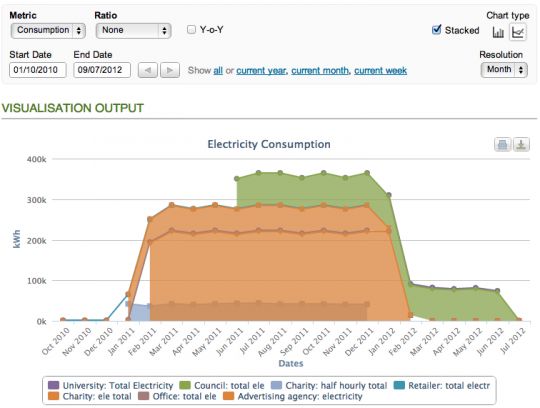Many vendors, such as Assistly, DropBox, JigSaw, LinkedIn, Pivotal Labs, Skype, and hundreds more, use the 'freemium' pricing approach. These vendors offer an internet-based software application that is free and designed for widespread adoption. The vendor generates revenue from customers that choose to pay for additional features. This approach provides customers with a way to use a product (often for years) before purchasing more advanced features.
This popular approach has now come to energy management software, which is one part of the Groom Energy Enterprise Smart Grid framework, a framework that allows energy managers to understand the interoperability of hardware and software systems for visibility, control, and management integration for energy management of a single or multiple sites.
FIGURE: Enterprise Smart Grid Framework
Source: The Enterprise Smart Grid and a Corporate Buyer’s Guide for Energy Management Software
Noesis Energy and Energy Deck are two start-ups we have been following that are using a fremium model for software products that help companies with visibility and management integration. Neither product actually controls equipment or devices.
Other vendors, such as EnergyCap and Hara, also offer limited-time, free trials, but neither offers a free version that can be used for years.
NOESIS ENERGY
Founded in Austin, Texas in 2011 by serial entrepreneur Scott Harmon, Noesis Energy raised $14.5 million in venture financing. Noesis Energy has been in beta this summer with a free set of services, and plans to eventually offer premium services this fall. Free services include software tools, such as facility energy tracking by building; project tracking and information services, such as a database for energy-efficiency incentives; benchmarking information; and best practices. Premium services include advanced energy analysis and financial models, for which pricing has not yet been announced.
FIGURE: Noesis Energy Portfolio Ranker

Source: Noesis Energy
ENERGY DECK
Before founding U.K.-based Energy Deck, CEO Benjamin Kott spent five years at Google. Now he's bringing the Google approach to software application design and customer adoption to energy management. The free version of the product enables small and medium-size organizations (and even residential users) to track energy use for one building and up to three meters. Other features include project tracking and benchmarking.
FIGURE: Energy Deck Visualization

Source: Energy Deck
Pricing is shown on the website and is based on the number of buildings, meters, projects, as well as other factors. The initial pricing level starts at $45 per month.
Each of these vendors offers promising software products to help facility and energy managers better understand and reduce energy costs.
For more information on the enterprise software market, see GTM Research's report, The Enterprise Smart Grid and a Corporate Buyer’s Guide for Energy Management Software.



